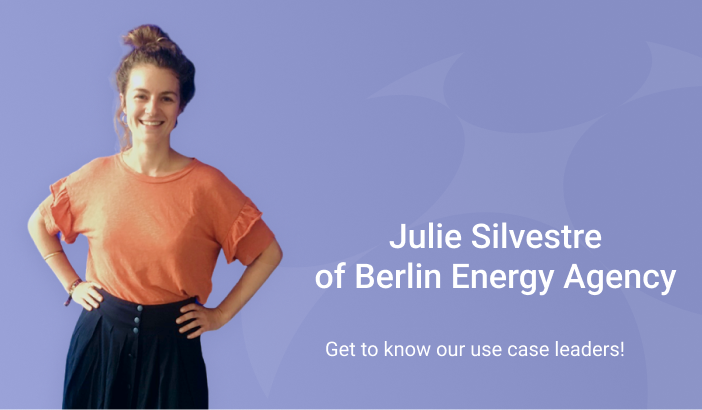
15 Feb Get to know our Use case leaders! Why Julie Silvestre is taking a close look at what SMEs are focusing on right now
Dear Julie Silvestre, please introduce yourself.
Julie Silvestre: My name is Julie Silvestre, I am 29 years old. I have a French engineer diploma in “Urban Systems”. I find it always quite hard to explain, the topics where pretty large but our focus was mainly on energy efficiency in buildings and renewable energies. I worked in France two years in an engineering office for sustainable construction and when I decided to move to Berlin, I started working at Berlin Energy Agency (BEA) as consultant for energy efficiency and climate protection.
What inspires you about the GEAR@SME project?
I find inspiring to work on an European level and have inputs from other countries. I like the fact that we are targeting small and medium enterprises, which together can have a great impact on energy consumption reduction and climate change.
What exactly do you do as a Use case leader?
As Use case leader, I coordinate the exchanges and communication with our contact person in our Use case Adlershof and in the area of Berlin. I am also in charge of the “technical part“ when reaching an SME. I am going on site to do energy scan and also prepare and organize webinars for SMEs or training for stakeholders. The German use case is the “Technologiepark Adlershof”, a business park hosting about 1,200 enterprises in the South-eastern part of Berlin. Most of these are SMEs, from a wide range of sectors, including the manufacturing sector. The focus, though, is on science and technology-related enterprises (596 companies) and media (196 companies).
What role has climate protection and energy saving played for SMEs in your region so far?
The level of interest or engagement is very variable from one business park or SME association to another. The focus is on climate protection rather than strictly on energy efficiency. That’s why we organized several webinars on climate neutrality and carbon footprint.
What have you been able to achieve in the use case so far?
We had two webinars on climate neutrality and carbon footprint with SMEs from Adlershof’s Business Park. The same SMEs took part in the two webinars which showed engagement, but the attendance rate could be higher. We could perform an energy scan by one of the SME as well. But especially because of the rising energy prices, SMEs can benefit a lot from participating in GEAR@SME. Getting in contact with SMEs and Trusted partner and getting them engaged is what has been challenging so far. We had some direct questions from an SME who was realizing its carbon footprint after our webinar. It’s always a nice sign when what is been shared is also being implemented afterwards.
Do you have any tips on how best to get SMEs to go greener and save energy? What is the best way to reach them? What is the best way to convince them?
In my opinion it is important to look for their focus now when being approached. If they are more sensible to the climate protection aspect, maybe introduce energy efficiency as part of a whole, instead of only targeting this topic. I would also always start with some organizational measures first, if they are not already implemented: is someone responsible for the energy/ climate topic in the company, is there an energy monitoring in place? has the load profile been analysed? These measures do not cost much but can already achieve some savings.
What do you have planned for the next time for SMEs?
We are organizing in the next month a training “More than saving energy: Multiple Benefits of energy efficiency measures”, which will introduce the concept of Multiple benefits to different stakeholders (energy service suppliers and Trusted partners). This approach should facilitate the implementation of energy efficiency measures when these are linked to the core business of the company.
Thank you for the interview!


